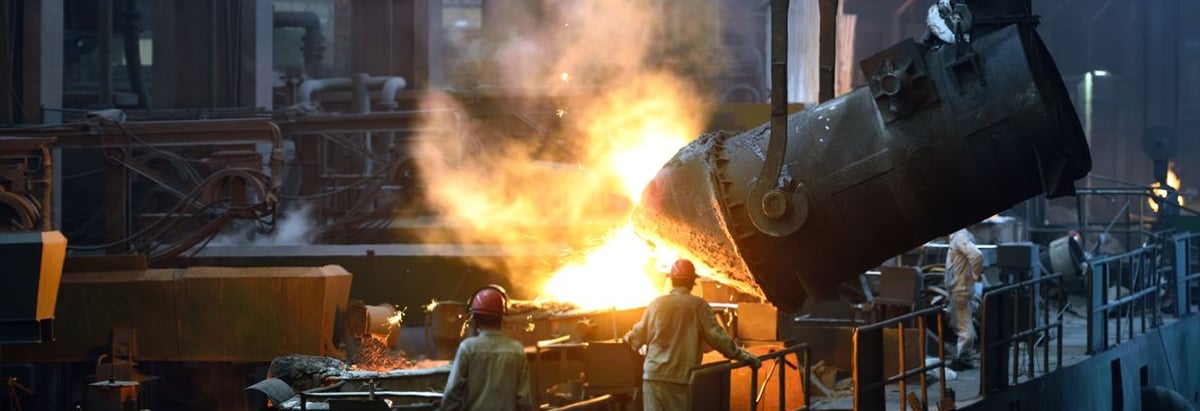- United States
- /
- Metals and Mining
- /
- NasdaqGS:STLD
Here's What Steel Dynamics, Inc.'s (NASDAQ:STLD) P/E Ratio Is Telling Us

This article is written for those who want to get better at using price to earnings ratios (P/E ratios). We'll show how you can use Steel Dynamics, Inc.'s (NASDAQ:STLD) P/E ratio to inform your assessment of the investment opportunity. Looking at earnings over the last twelve months, Steel Dynamics has a P/E ratio of 6.31. That corresponds to an earnings yield of approximately 16%.
Check out our latest analysis for Steel Dynamics
How Do I Calculate A Price To Earnings Ratio?
The formula for price to earnings is:
Price to Earnings Ratio = Share Price ÷ Earnings per Share (EPS)
Or for Steel Dynamics:
P/E of 6.31 = $33.96 ÷ $5.38 (Based on the trailing twelve months to December 2018.)
Is A High Price-to-Earnings Ratio Good?
A higher P/E ratio means that investors are paying a higher price for each $1 of company earnings. That isn't necessarily good or bad, but a high P/E implies relatively high expectations of what a company can achieve in the future.
How Growth Rates Impact P/E Ratios
Earnings growth rates have a big influence on P/E ratios. That's because companies that grow earnings per share quickly will rapidly increase the 'E' in the equation. Therefore, even if you pay a high multiple of earnings now, that multiple will become lower in the future. Then, a lower P/E should attract more buyers, pushing the share price up.
Steel Dynamics's earnings made like a rocket, taking off 59% last year. The sweetener is that the annual five year growth rate of 44% is also impressive. So I'd be surprised if the P/E ratio was not above average.
Does Steel Dynamics Have A Relatively High Or Low P/E For Its Industry?
One good way to get a quick read on what market participants expect of a company is to look at its P/E ratio. If you look at the image below, you can see Steel Dynamics has a lower P/E than the average (8.8) in the metals and mining industry classification.

Its relatively low P/E ratio indicates that Steel Dynamics shareholders think it will struggle to do as well as other companies in its industry classification. Many investors like to buy stocks when the market is pessimistic about their prospects. It is arguably worth checking if insiders are buying shares, because that might imply they believe the stock is undervalued.
Remember: P/E Ratios Don't Consider The Balance Sheet
It's important to note that the P/E ratio considers the market capitalization, not the enterprise value. In other words, it does not consider any debt or cash that the company may have on the balance sheet. Theoretically, a business can improve its earnings (and produce a lower P/E in the future) by investing in growth. That means taking on debt (or spending its cash).
Spending on growth might be good or bad a few years later, but the point is that the P/E ratio does not account for the option (or lack thereof).
Is Debt Impacting Steel Dynamics's P/E?
Steel Dynamics has net debt worth 17% of its market capitalization. It would probably deserve a higher P/E ratio if it was net cash, since it would have more options for growth.
The Verdict On Steel Dynamics's P/E Ratio
Steel Dynamics trades on a P/E ratio of 6.3, which is below the US market average of 18.2. The company does have a little debt, and EPS growth was good last year. If it continues to grow, then the current low P/E may prove to be unjustified.
When the market is wrong about a stock, it gives savvy investors an opportunity. If it is underestimating a company, investors can make money by buying and holding the shares until the market corrects itself. So this freevisual report on analyst forecasts could hold the key to an excellent investment decision.
But note: Steel Dynamics may not be the best stock to buy. So take a peek at this freelist of interesting companies with strong recent earnings growth (and a P/E ratio below 20).
We aim to bring you long-term focused research analysis driven by fundamental data. Note that our analysis may not factor in the latest price-sensitive company announcements or qualitative material.
If you spot an error that warrants correction, please contact the editor at editorial-team@simplywallst.com. This article by Simply Wall St is general in nature. It does not constitute a recommendation to buy or sell any stock, and does not take account of your objectives, or your financial situation. Simply Wall St has no position in the stocks mentioned. Thank you for reading.
About NasdaqGS:STLD
Steel Dynamics
Operates as a steel producer and metal recycler in the United States.
Flawless balance sheet and undervalued.
Similar Companies
Market Insights
Community Narratives



